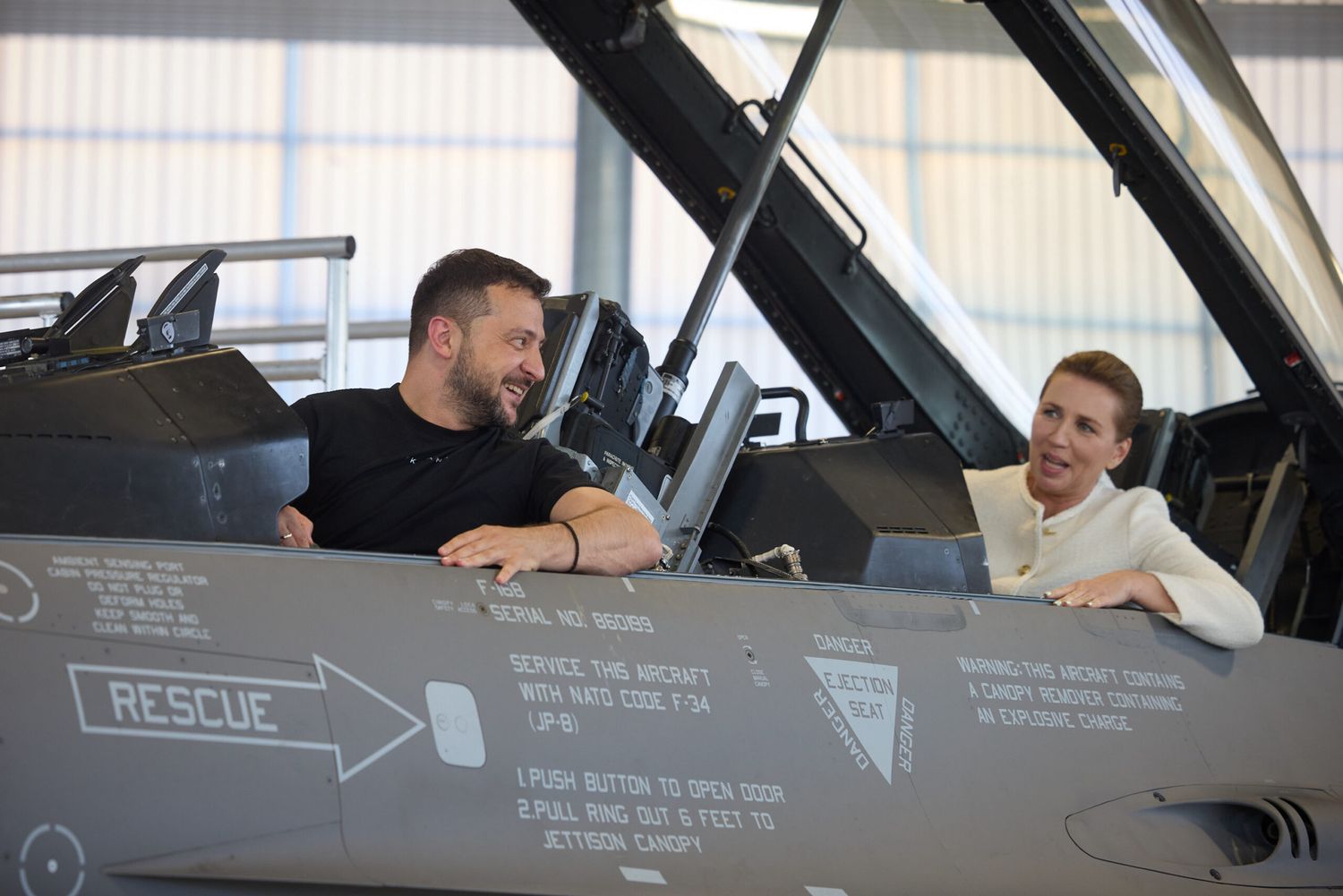How Ukraine plans to use F-16 fighters to challenge Russian air superiority
General Sergiy Golubtsov, commander of the Ukrainian Air Force, gave an interview to Radio Svoboda, in which he elaborated on the current situation and explained how they intend to use the F-16 fighters to dispute the air superiority that Russian has held since the beginning of the war.
Although Ukrainian pilots training abroad report that they are very satisfied with the combat qualities of the F-16s, General Golubtsov has no illusions, and knows perfectly well that disputing the airspace of the Russians will be a difficult task, which will require good tactics and the coordinated use of various resources.
First stage: prepare and gain experience
Beyond the fact that the future Ukrainian F-16 pilots are undergoing accelerated training in several NATO countries (starting with English classes, essential to understand the instructors, read the manuals and handle the software), the truth is that it is going to take some time before they are really ready to squeeze the potential of this fighter aircraft, as well as its weapons and equipment. It is a process that takes time. The first F-16s would arrive in Ukraine during this year, but they will be deployed in relatively safe areas of the country, in order for both pilots and technical personnel to build up their operational experience.
Then there is the delicate issue of protecting the air bases from which the F-16s will operate. Ukrainian airfields are attacked almost every night by Geran/Shahed-type kamikaze drones and cruise missiles, and since the F-16 bases will be priority targets for the Kremlin, they also expect to be targeted by Russian supersonic and hypersonic missiles such as the Kinzhal or Iskander.
Golubtsov therefore estimates that he will need at least two Patriot or SAMP-T missile batteries to provide high-altitude defense, and particularly to intercept Iskander and Kinzhal quasi-ballistic missiles; and at least two NASAMS batteries to work on aerodynamic targets, drones, and also to cover the Patriot itself from them. These assets will be complemented by Stinger-type short-range missile systems and anti-aircraft systems such as the German Gepard. This would be the “minimum” active defense configuration required.
The biggest threat is posed by super/hyper-sonic missiles, because they have the best chances of piercing the defensive umbrella. “Our biggest concern is that the Russians do not consider the number of ‘Kinzhal’ and ‘Iskander’ missiles they can use to attack F-16s on airfields,” Golubtsov commented, perhaps fearing the results of a massive attack by such weapons, and hoping that Russia does not have the necessary amount of such munitions to completely neutralize one of these airfields.

Second stage: hunting the Su-34
Golubtsov understands that the F-16 alone is not a “panacea” and in order to be able to intercept enemy aircraft (while retaining acceptable chances of returning to base in one piece), the US-origin fighter must be complemented by AEW early warning aircraft (such as the two ASC 890s that Sweden will transfer to Ukraine), air defense systems such as Patriot and various other resources. The information gathered by the various systems will be shared via the Link 16 data link so that pilots can have real-time situational awareness of threats present in the area.
“We need to push back Russian aircraft so they can’t attack our civilians,” Golubtsov said. “The F-16s will help us do that.”
Knowing the air picture in the area of interest, F-16 pilots will try to hunt down Russian aircraft tasked with dropping KAB-type guided bombs, which are usually Sukhoi Su-34s. Since the Russian Air Force (VVS) implemented satellite-guided kits with extended range on its bombs, bombing missions became much more effective, and safer for Russian aircraft, as they were outside the coverage area of most Ukrainian short- and medium-range air defense systems. The idea, ultimately, is to force the Su-34s away from the front line to reduce their effectiveness.
Third stage: Local air superiority
After “pushing” the Su-34s, the head of the Ukrainian Air Force thinks that the next step will be to try to drive the Su-35s at least 30-50 km away from the front, where today, they operate unopposed. This would be considered a turning point in the war, as it would allow Ukrainian aviation to achieve a sort of levelling out in the airspace.
Along with long-range air defense systems such as the Patriot, Ukraine plans to use F-16s to gain air superiority in certain areas. “To win the war, we need to have air superiority in at least some areas,” Golubtsov noted. “The F-16s will help us achieve that.”
Spain and Ukraine sign security agreement that could reach up to 5 billion euros
Final considerations
It is clear that the incorporation of Western fighters such as the F-16MLU and its modern armament represent a great leap forward for the Ukrainian Air Force at a qualitative level and an important quantitative reinforcement, which will help palliate the losses of old Soviet jets, suffered mainly during the first half of the war. But by themselves they will not be able to completely turn the current situation around.
This does not detract from the fact that, if used sparingly and intelligently, they could yield positive results. Particularly in the coming years, when Ukraine will have more and more aircraft and trained pilots.
Along with other equipment delivered by the West, such as Patriots and Saab 340 AEWs, Ukraine will try to use its F-16s to lessen the threat of heavy Russian bombing (President Zelenskyi recently claimed that Russia is pounding them with more than 3,000 aerial bombs a month), which in itself would be a significant relief for troops on the ground and frontline logistics. And if they can also deny unrestricted use of airspace to Russian fighters, over a given area for a sufficient amount of time, the Ukrainian military could use those moments of “clear skies” to launch key ground offensives.


Comentarios
Para comentar, debés estar registrado
Por favor, iniciá sesión